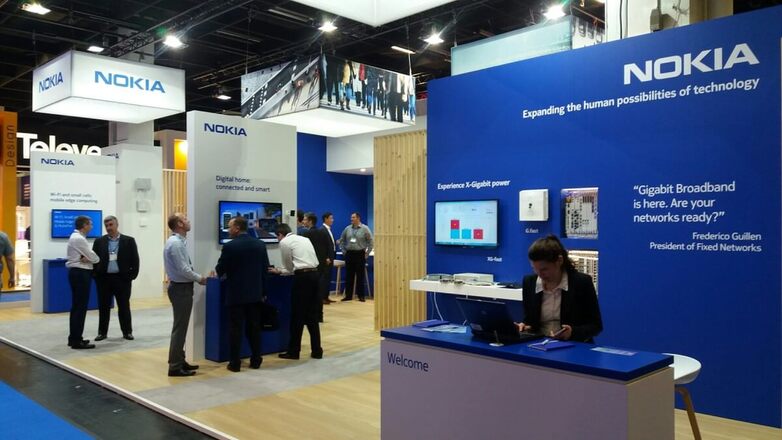
Nokia has introduced its 50G Passive Optical Network (PON) solution, a major step forward in enabling ultra-fast, post-quantum-secure broadband connectivity for enterprises and operators.
Built to meet the evolving needs of AI-driven industries and data-intensive business environments, the solution delivers extreme capacity, reliability, and resilience, while preparing networks for the security challenges of the quantum computing era.
Available on Nokia’s Lightspan MF platform, the new 50G PON technology can be deployed on the same 25G PON line card currently in use, allowing operators to upgrade existing infrastructure with minimal disruption. This approach enables a seamless evolution path from 10G or 25G to 50G networks – reducing costs and accelerating time-to-market for high-speed enterprise connectivity.
By leveraging existing fiber-to-the-home (FTTH) infrastructure, operators can extend services to businesses, campuses, and industrial sites without the expense of building separate fiber networks. This unified model offers the scalability to handle a wide variety of use cases, from smart manufacturing and connected healthcare to AI workloads and real-time data analytics.
The system is powered by Nokia’s Quillion chipset, a highly flexible platform that supports GPON, XGS-PON, 25G, and now 50G PON technologies. The chipset’s modular design allows for compatibility with future optical modules, including 50G symmetrical configurations and multi-PON or triple-PON combinations. The Lightspan line card also uses compact optics to maximize port density, reduce energy consumption, and ensure backward compatibility – providing a cost-effective way for operators to grow capacity while preserving existing investments.
One of the most critical aspects of Nokia’s new PON solution is its quantum-safe security architecture. As the industry anticipates the arrival of quantum computers capable of breaking conventional encryption, Nokia’s system employs quantum-safe encryption and secure key exchange mechanisms to prevent today’s data from being harvested and decrypted in the future.
Cloud, AI, Industry Applications, Mobile Evolution
To further enhance resilience, the 25G/50G PON design supports redundant architectures that maintain connectivity even under fault conditions such as fiber cuts or network disruptions. With six-nines (99.9999%) availability, the solution provides the reliability required for mission-critical operations in industries such as finance, defense, and energy.
Additional AI-driven performance optimization features ensure that network operations remain efficient and adaptive. These built-in automation and monitoring tools enable operators to predict and resolve issues before they impact service, reducing downtime and operational costs.
“Multi-gigabit deployments are increasing worldwide, driven by cloud, AI, industry applications, and mobile evolution,” said Geert Heyninck, General Manager of Broadband Networks at Nokia. “For residential services, XGS and 25G are highly effective, but enterprises require higher capacity, stronger security, and absolute reliability. Our 25G/50G PON solution delivers these capabilities – not only today but also in the post-quantum future.”
Vivek Gaur, Vice President of Engineering at Colt Technology Services, one of Nokia’s key partners in early trials, emphasized the strategic value of the upgrade. “With Nokia, we’ve shown how our fiber network can support the future of enterprise connectivity. Our trial of Nokia’s 50G PON solution demonstrated the flexibility and performance needed to serve enterprise customers running cloud, AI, and data-intensive applications – all over the same fiber infrastructure.”
Industry analysts have echoed the significance of Nokia’s approach to simplifying network evolution. “Operators require networks that grow with their customers’ needs,” said Roland Montagne, Principal Analyst at IDATE. “A single line card supporting 10, 25, and 50G PON lets them serve everything from home broadband to high-capacity business services, while keeping the network simple, scalable, and cost-efficient.”
With the rollout of its 50G PON solution, Nokia continues to consolidate its position as a leader in next-generation broadband infrastructure. By blending quantum-secure protection, AI optimization, and evolutionary hardware design, the company is equipping operators and enterprises alike with the tools to handle the next decade of digital transformation – from cloud and AI applications to the emerging demands of the post-quantum era.


